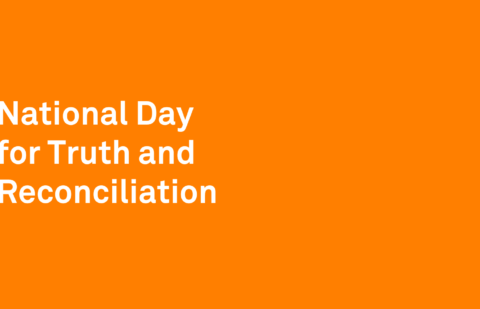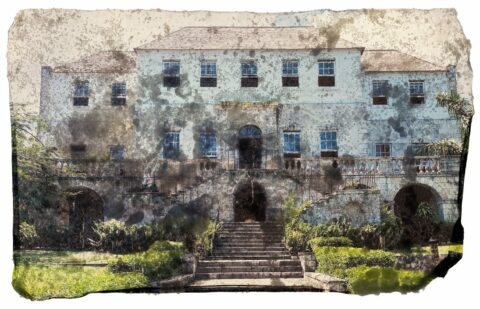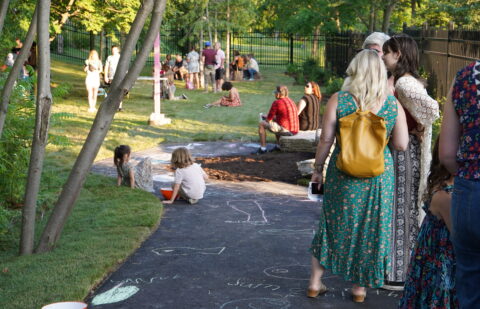At the RMG, we often get asked about what we do each day, how we got into the crazy museum world and also what skills would be needed to do our jobs. With graduation looming for many college and university students, we will be profiling members of our team to shed some light on what it is we do behind the scenes!
To start, we sat down with Sam Mogelonsky, who is the voice behind the RMG’s digital platforms, to learn more about her day and how she came to the gallery.
The RMG: What’s a typical day like for you?
Sam Mogelonsky: Firstly, no day is the same for me! My job is a lot like a party mix—part writing, part design, part print, part digital, but very fast paced. The first thing I do each day is open up all of our social media feeds and check in to see if we have had any questions over night on Facebook, Twitter, Instagram, etc. Then I’ll typically write a morning post about something happening either later that day or upcoming at the gallery. I also have a master list of every upcoming deadline for advertising materials so I check that daily to make sure I get everything designed and delivered in time.
Once I have my morning postings and general emails taken care of, I will focus on an upcoming project or deadline. It could be designing our upcoming newsletter, writing press releases for exhibitions, updating our website, helping to design signage for the gallery or more long term planning for events such as RMG Fridays or fundraising. At the moment, I have two PR interns from Durham College so I am trying to impart some marketing wisdom on them by showing them hands on tools, like Google Analytics and HootSuite. There’s always something that comes up in a rush that needs some finessing or a design eye. I check in on social media about every few hours and will be posting throughout the day to stay in the conversation.
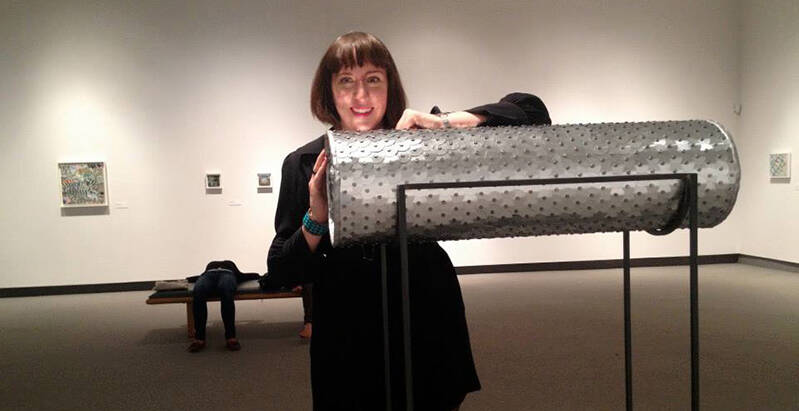
Sam at Making Methods, 2013
RMG: How did you get into this field?
SM: I started at the RMG about a year and a half ago. I had exhibited at the gallery in Making Methods (2013) and was captivated by the space and also loved working with Senior Curator Linda Jansma. Before that, I was working for a boutique advertising agency, managing the studio and web development. My past clients in the ad world have included car companies, telecom, hotels, tourism destinations, charities, restaurants, and even a dog food company! I was also doing a bunch of design and marketing projects for my friends in the art world—mainly designing websites and running social media campaigns for artists and galleries… and I still do this on the side.
I always had a keen eye for advertising and design, with my first projects being posters for my high school’s musicals. I grew up in a household surrounded by art and was always very interested in how to communicate visually. Since I studied fine art and am now an artist as well, understanding how people communicate and interact is key to my practice.
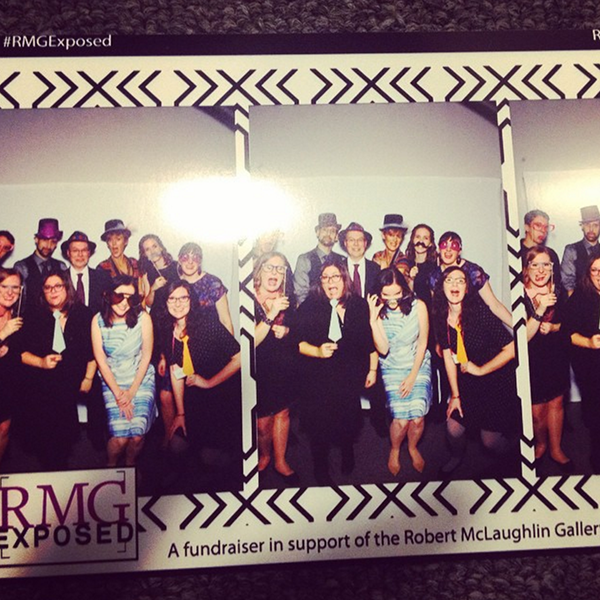
RMG Exposed 2015, staff and volunteers shot
RMG: What skills or training do you need for your job?
SM: I think the main skills are being able to communicate clearly in words and visual imagery, which I got from my undergrad in fine art and art history at Queen’s University in Kingston, Ontario and my Master’s Degree in sculpture from Central Saint Martin’s College of Art and Design in London, UK. Writing and story telling has always been key to my many roles which writing for art history and critical thinking definitely teaches you!
The more technical skills I have just picked up… in undergrad, I wanted a website for my graduation, so I taught myself how to build a website (note, in 2006 something like Squarespace didn’t exist so you had to code direct with HTML and CSS). For web building now, I use WordPress. The first site I built took quite a while to figure out, but now I’ve made over 30 websites so I can probably whip a small one up pretty quickly.
When I wanted to make projects that required image editing or video, I taught myself how to do it using online tutorials and working with friends. When I first started, I had a hacked copy of Quark Xpress and learned by using dummy books and really thinking about typography. It’s a lot of trial and error and practice… use InDesign a few times and you will forget the features—use it every single day and it becomes second nature.
Social media is a whole new beast! Being the bridge between the digital and analogue generations, (I got Facebook in 2005 and was one of the first among my friends to have it in London when I moved to the UK) I grew up before every moment was digitized. There’s so much out there and I think the way we engage with social platforms will continue to shift and evolve as we build the internet together. As the voice of the gallery online, I do my best to keep up with digital trends and am always looking for the next network we should branch into.

Hootsuite social dashboard for the RMG
RMG: What’s your favourite part of your job?
SM: Meeting the artists, seeing the collection and learning from my team. The most exciting moment of an exhibition is definitely when I get to meet the artist behind the work and learn more about their practice. I have been able to meet so many wonderful artists through working here (Coral Short, Pete Smith, Ron Shuebrook, Holly king, to name a few). They have really shone a light on what’s happening in Canadian art today and been inspiring.
I am also exceptionally proud of the new RMG website we launched in winter 2015 (that houses this article)! It was really fantastic to work with Junction Design on this project and ensure we made a site that worked for the many needs of the gallery, while providing a great user experience.

At the OAAG conference at the Art Gallery of Windsor in 2015, speaking about RMG Fridays and building a community
RMG: What are 5 things you couldn’t live without in your job?
SM: iPhone, MacBook Pro, Google Drive, Adobe CS and Instagram.
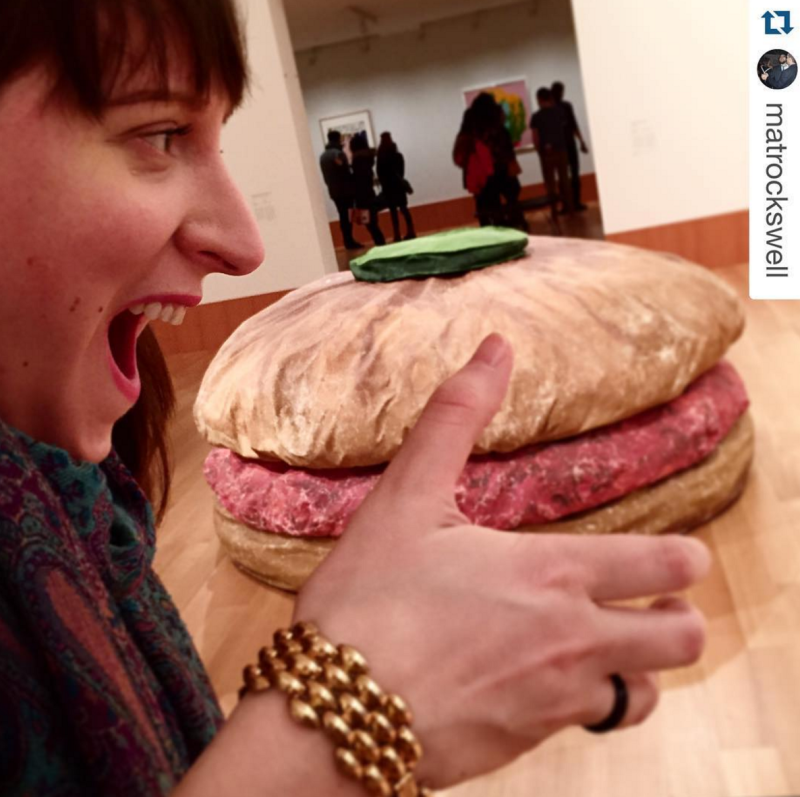
At the AGO for #MuseumSelfieDay with the Floor Burger by Claes Oldenburg
RMG: What do you get up to outside of the RMG?
SM: At the moment, my life outside of work is mainly focused on art – making it, seeing it and reading about it. When I’m not at the RMG, I’m probably on a gallery crawl, in the studio or curled up reading articles on Hyperallergic, Canadian Art, Sculpture or Juxtapose. I love good wine and food so that’s my other go-to, a good bottle of VQA and a tasty meal, especially if it involves oysters. Anyone who hangs out with me knows I love anything that sparkles, so I am always on the hunt for awesome vintage pieces with glitter. I am a big dog lover, so I try to spend as much time with my parent’s adopted 120lb Bouvier puppy, Hondo, as I can. I also have a sweet spot for bad ‘80’s and ‘90’s action movies. Die Hard is a masterpiece. Yipee Ki Yay!
For more, follow Sam at @sammogelonsky
